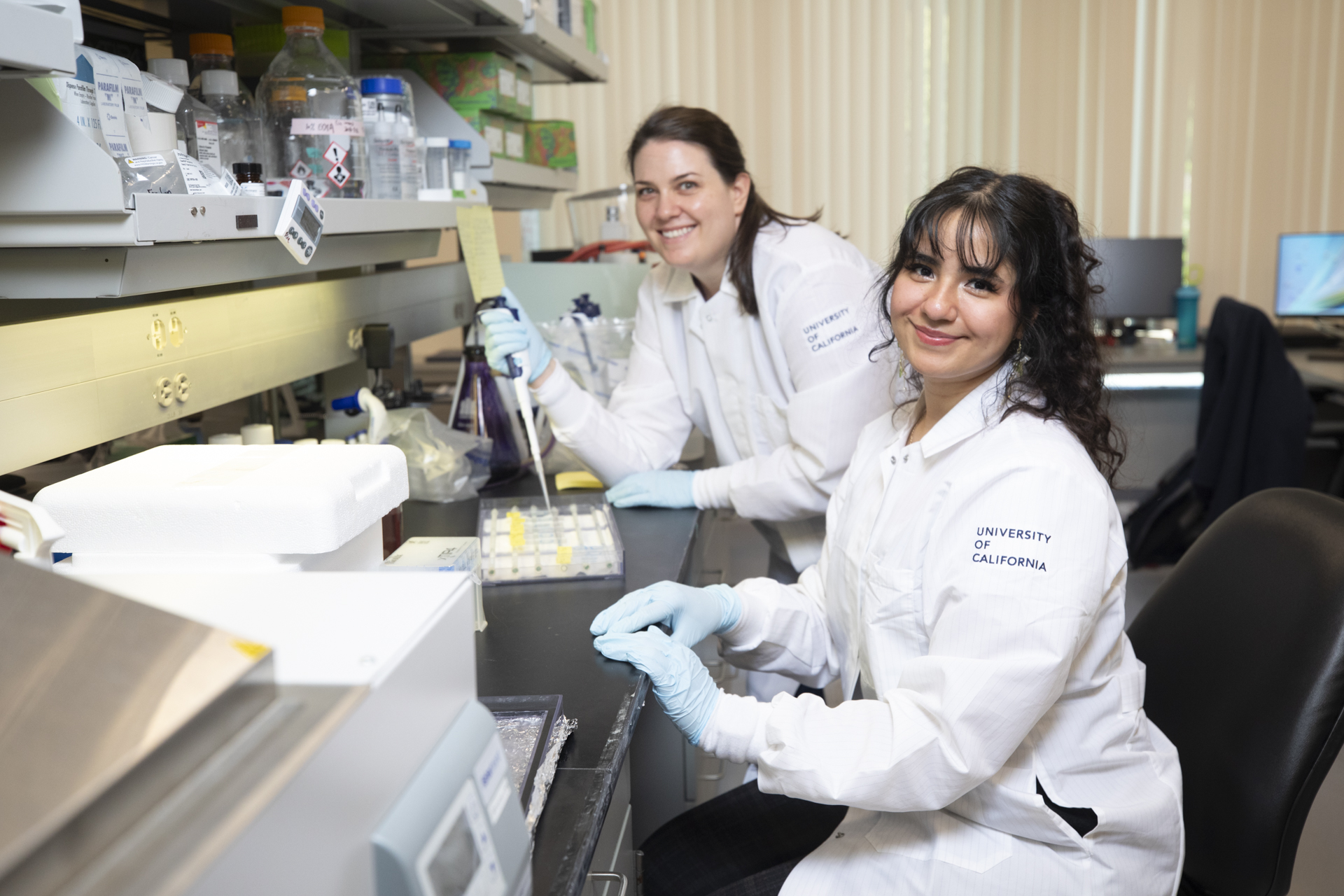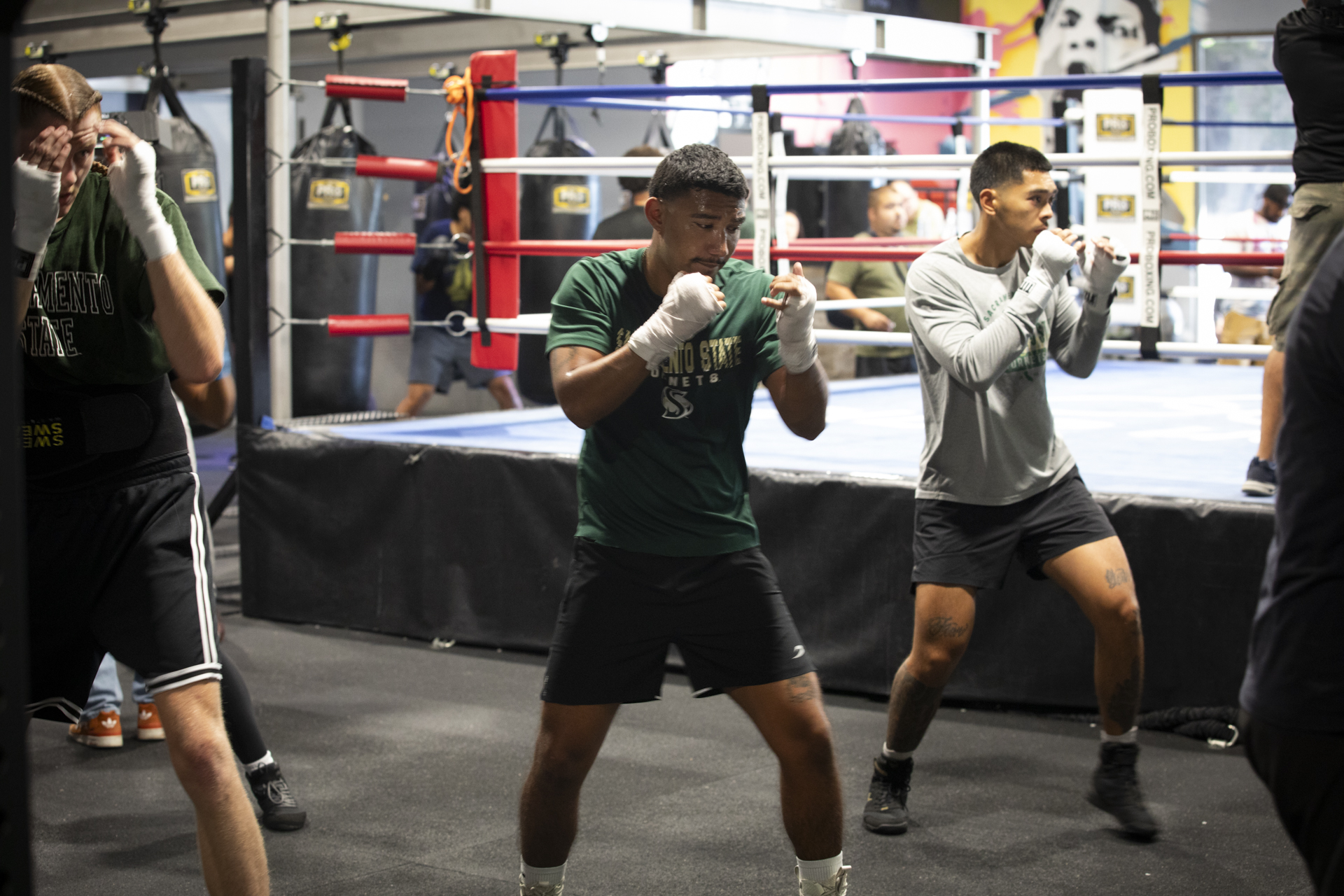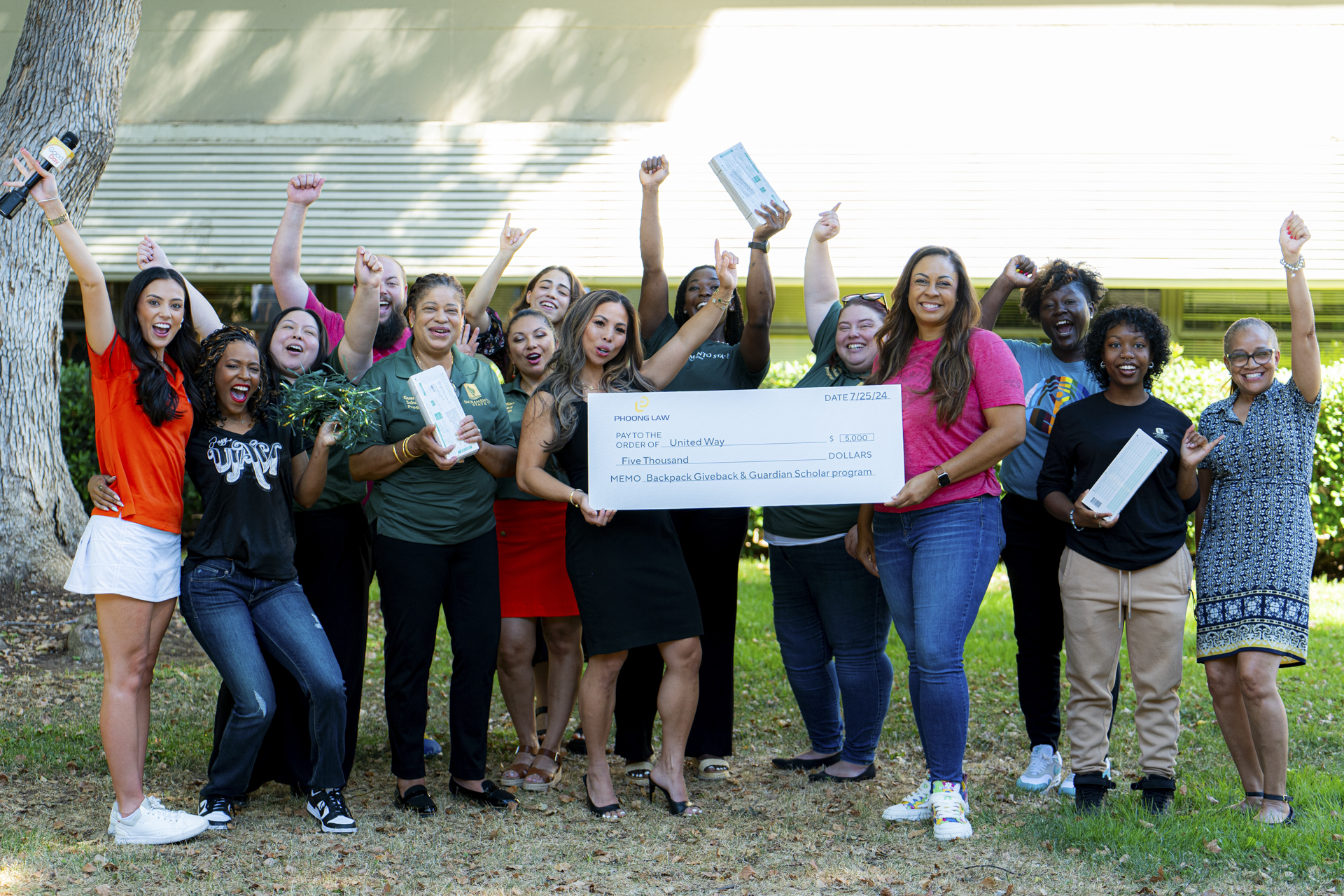Story Content
Sac State Psychology students help elementary school kids unlock nearby creek’s possibilities – and ignite their community spirit
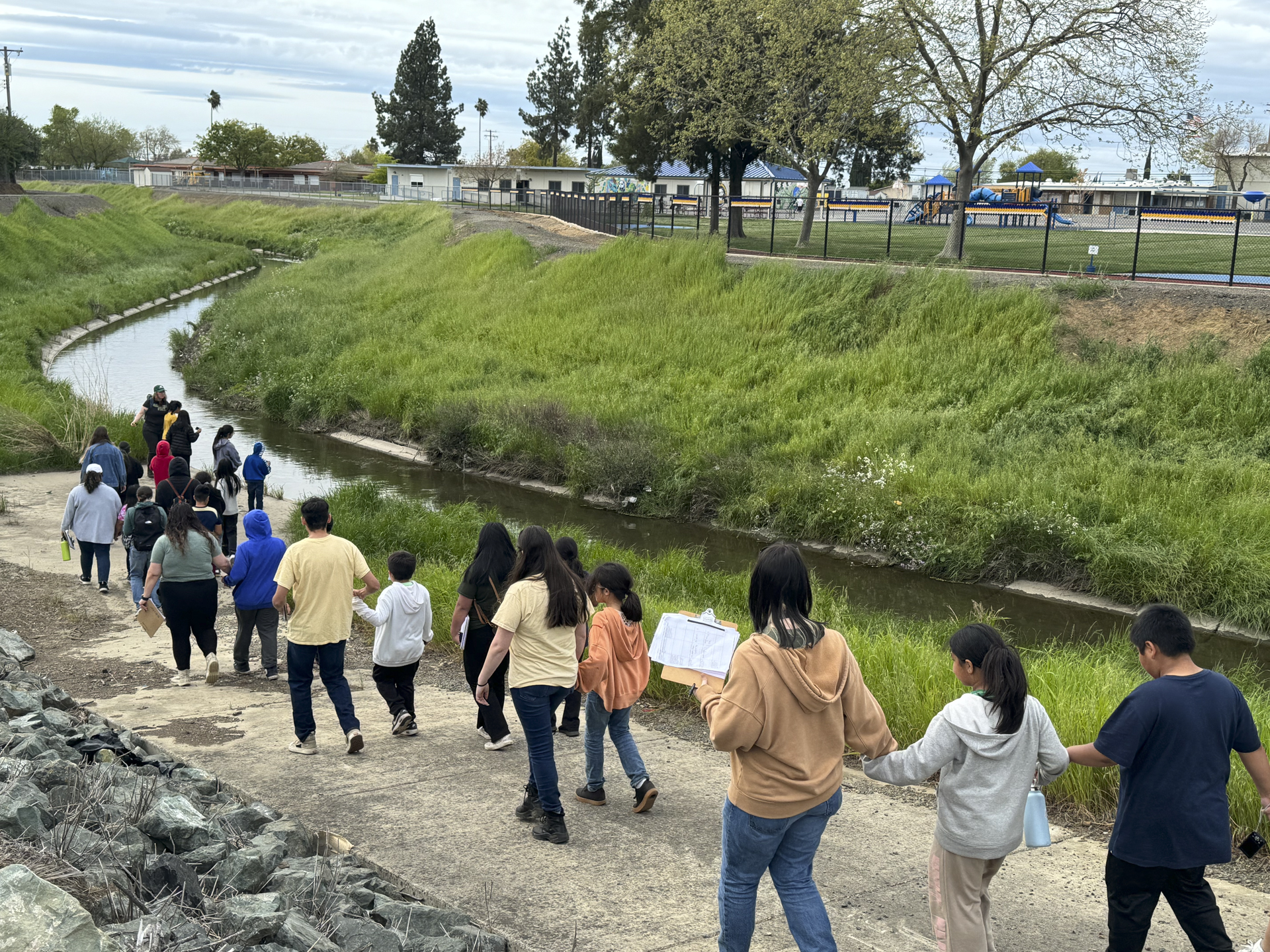
July 29, 2024
“Boba tea shop,” one kid said.
“A mall,” said another.
“Or,” suggested a fourth-grade girl. “We could keep everything open and put in a mall with a boba shop and playground.”
Sacramento State Psychology students, led by Professor Erin Rose Ellison, are working with children at Elder Creek Elementary School to research ideas for improving Morrison Creek, which runs behind their campus, as part of a community-wide effort to revitalize the neighborhood.
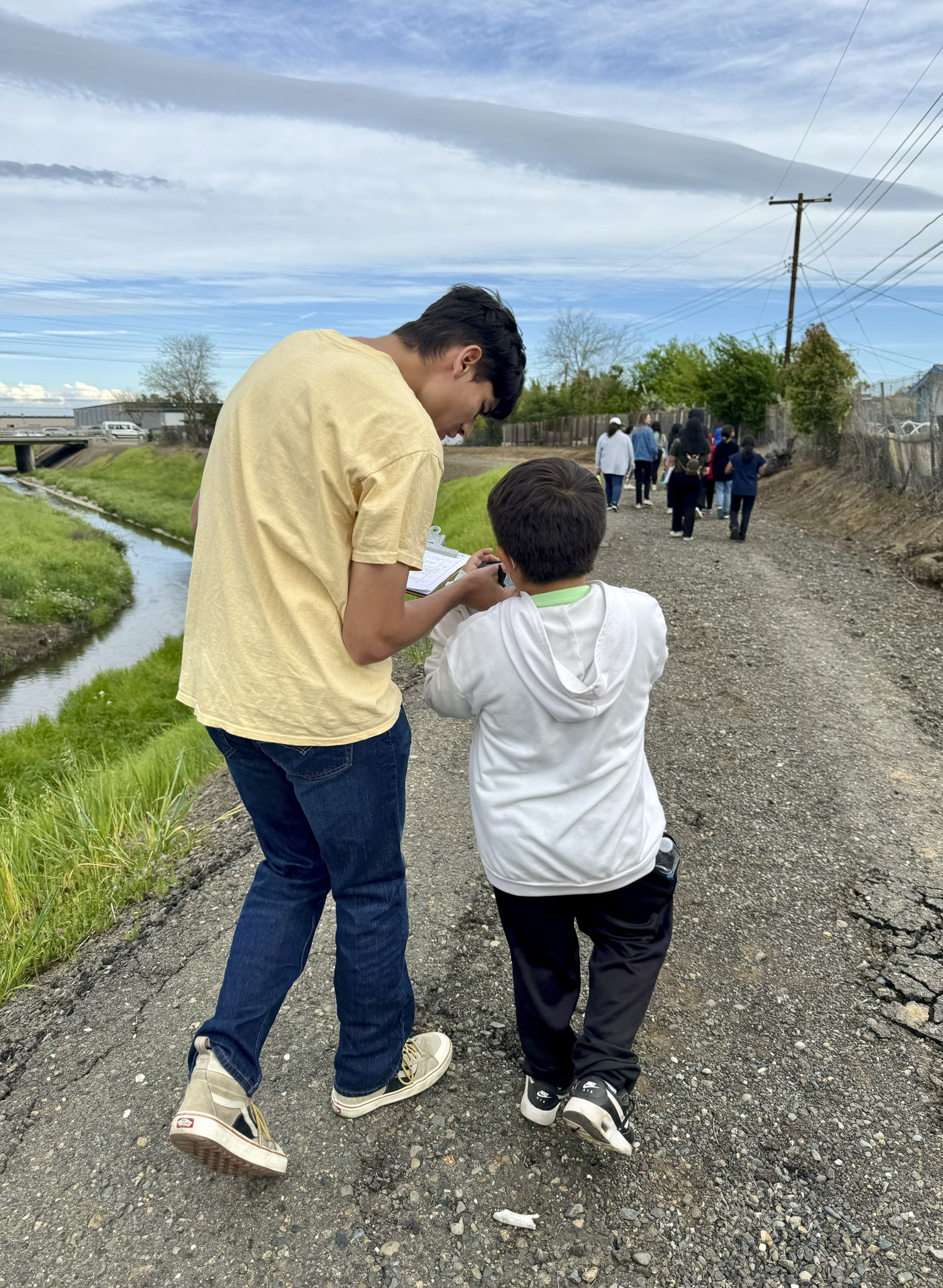
College students gain first-hand experience in the field, observing and collecting data, while engaging with children and fostering civic involvement and being a voice in the community at an early age.
“Our students are developing invaluable skills around interacting with youth, developing curriculum and how to do research,” Ellison said. “The children seem to really be enjoying the relationships they’ve built with our students. It’s been a mutually beneficial, exciting thing.”
Morrison Creek is a Sacramento River tributary that runs behind Elder Creek Elementary School and through the Avondale Glen Elder neighborhood. Much of the creek is fenced off, and access is blocked by secured gates. Homeless encampments have popped up in vacant lots along the waterway, which has also become an illegal dumping site.
The Sacramento Community Land Trust, neighborhood leaders, and the city of Sacramento have been developing a plan to clean up the creek and restore some of the natural habitat, as well as build a pedestrian and bike trail to make it safer for recreation, to turn Morrison Creek into a community asset.
Ellison and her Psychology students partnered with the Sacramento Land Trust to work with children in Elder Creek’s afterschool program run by the Sacramento Chinese Community Service Center.
“We’re trying to incorporate the kids in the decision making to find out what they’d like to see at the creek, where they want to build a bridge or playground, and what they want it to look like,” graduate student Nicole Nasca said.
“It’s to boost civic engagement early on, so they’re more prepared throughout their lives to engage with their own communities when they grow up.”
Engaging participants in research is a way to inform and spur social action with the idea that community members — even children — have valuable expertise and ideas to share, Ellison said.
“It’s a way for us to communicate to them that Sac State and college are possible options for them in the future. They can get used to talking with professors and grad students." -- Erin Rose Ellison, Sac State Psychology professor
Nasca and her fellow Sac State students first had to figure out how to engage 20 or so pre-teens. They quickly learned the kids had no interest in writing down their hopes and dreams.
“This is the gift of engaging college students in research in the field,” Ellison said. “Initially, the kids did not want to write stuff on worksheets. They didn’t want to have anything to do with writing because when they get in trouble, they have to write lines.
“But as soon as we gave them cameras, they started taking pictures and writing about the photos.”
So, Ellison’s students developed a curriculum using photography as a way to conduct research.
“It’s a process called PhotoVoice, and it engages them by having them take pictures instead of writing their ideas down,” Nasca said. “Some kids hate writing, and photos are a universal language that allows them to be engaged no matter their reading or writing level.”
Ellison secured grant money, including one from the Spencer Foundation and University-Community Links, to pay for graduate student assistants. An Anchor University Grant also covered the cost of digital cameras.
Sac State students visited Elder Creek every Wednesday afternoon for several weeks talking to the kids about the Morrison Creek project, community engagement and how they can be a voice for change.
“We got them warmed up by asking if they had a pen pal that lived in another part of the world, what would they want them to know about their neighborhood,” Ellison said. “It’s an entry point to civic engagement at the neighborhood level.”
On one spring day between rain storms, Ellison and her students led the children on a walk along Morrison Creek.
Although the creek is visible from their school playground, most of the students had never been on the other side of the chain link fence.
The kids snapped photos of the running water, plants and birds, as well as graffiti and trash, prompted by questions such as “What do you love about the creek?” and “What do you want to change about it?”
They were also full of questions about the depth of the creek, what kind of fish live in its waters and whether they could swim in it someday.
By the time they reached the 65th Street bridge, they were full of ideas for what to place on the vacant lots along the creek, whether a boba shop, mall or park.
“I think it was really special for them to get out onto the creek because it’s locked away,” Ellison said. “The kids were so excited.”
Undergraduate students learned firsthand how to conduct ethnographic research through observations and interviews, while graduate Psychology students will use the data for their own research on topics such as critical literacy and community psychology.
Academics aside, the students from Sac State forged meaningful relationships with elementary school kids from Elder Creek.
“It’s a way for us to communicate to them that Sac State and college are possible options for them in the future,” Ellison said. “They can get used to talking with professors and grad students.
“It was so exciting to hear them talk about wanting to go to college. They kept asking me, ‘In 10 years when I go to college, will you still be a professor, Dr. E?’ ”
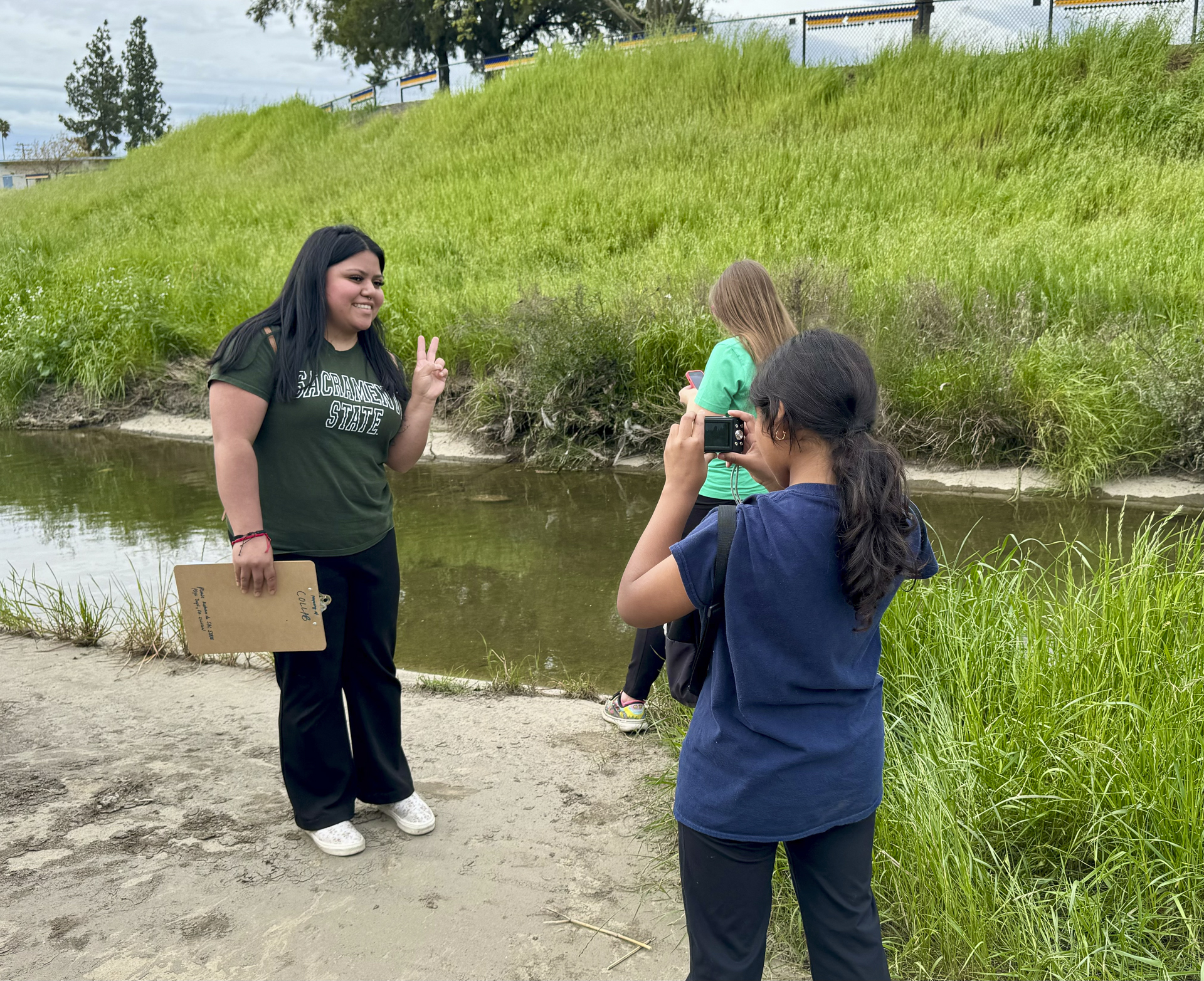
Media Resources
Faculty/Staff Resources
Looking for a Faculty Expert?
Contact University Communications
(916) 217-8366
communications@csus.edu
